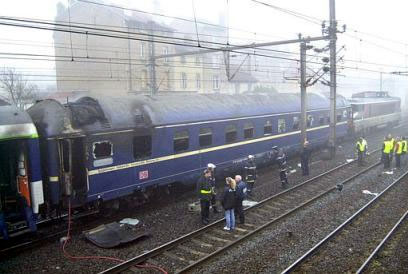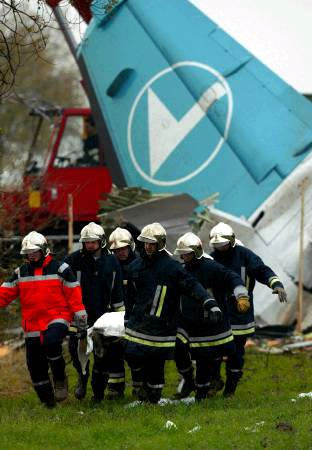

|
||
Ride the train, and rein in your feelings Make no mistake, the railroad is by far the safest, most economical, fuel efficient and environmentally sound mode of transportation across the Continent. Train stations are centrally located in all major cities and small towns, moving more passengers in less time than airports. Trains run typically on schedule and are not beset by either congestion or inclement weather. A leisurely train ride puts all the scenery into a tranquil, comfortable setting. Spontaneous camaraderie inside a train cabin is always a memorable experience. Above all else, two words really matter to this traveler: leg room. Lamentably, every time something does go wrong on the tracks, its trauma is doubly amplified. More than any other form of infrastructure, the railroad is a tangible symbol of a nation's stability and security. To the visitor, it provides the first true impression of having entered a different country. To be a victim of a train mishap, however rarely, is nothing less than to suffer a state's betrayal. |
||
|
More than any other form of infrastructure, the railroad is a tangible symbol of a nation's stability and security. |
Such is the tragedy of the Deutsches Bundesbahn and the SNCF in Nancy, France. On 6 November 2002, during its routine journey from Paris to Vienna, the (French-driven) German sleeping car apparently had a short-circuit in its heating system, resulting in a lethal fire. Since European trains have smoking sections, smoke detectors are not installed in many cabins. The train was not stopped until rail station staff in Nancy spotted smoke coming from the passing cabin. By then, twelve people from five nations have already died of the noxious fumes, including two American children. | |
|
This calamity cruelly coincided with the fatal crash of a Luxair commuter plane near Luxembourg's international airport. For some, it evoked painful memories in and around London, where no less than seven deadly train accidents had occurred in just as many years since 1995. When transportation disasters originate from elsewhere in the world – coming to mind is the recent capsizing of the Senegalese ferry Joola off the coast of Gambia, as well as one in Indonesian waters, or the crash of an Ukrainian charter jet near Bodensee (Lake Constance) at the German-Swiss border earlier this summer – the blame is always human error. The cause is inevitably an aged vehicle, vessel or craft that was excessively loaded, improperly maintained or incompetently piloted. What excuses do the Westerners have for themselves, then: the irresponsibility of the politicians for lax safety standards and insufficient funding? The complacency of the engineers for all mechanical faults? Terrorism? I personally care not how the blame game is played. I mourn for my fellow travelers and the hapless crew, and pray that my own luck fares much better next time I ply the international routes. With respect to planes, trains and ferries, the odds should still be in my favor. Charles Weng, 6 November 2002 |
||
|
|